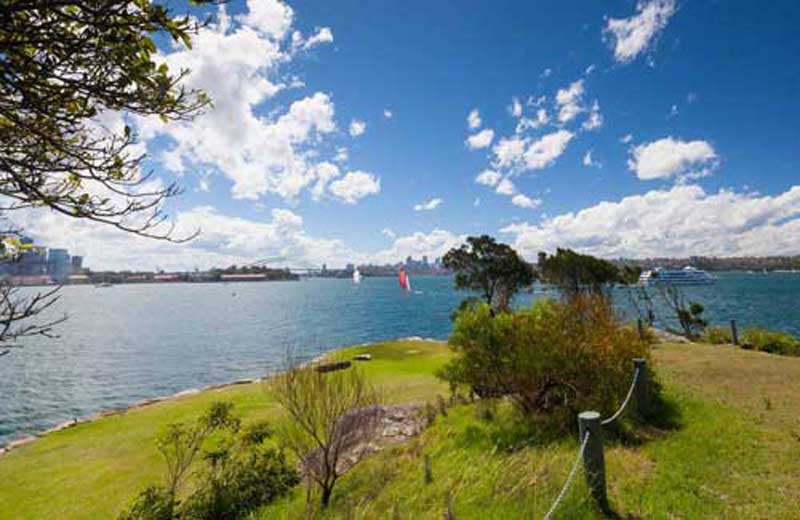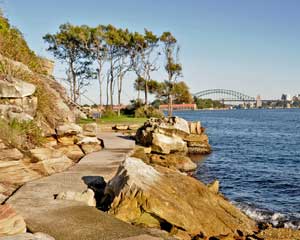Clark Island

Clark Island, at 0.9 hectares, is located off the tip of Darling Point in the eastern section of the harbour between the Harbour Bridge and the harbour entrance. A wonderful view of Clark Island may be obtained from Elizabeth Bay House, and the island itself offers panoramic views towards the Opera House and Harbour Bridge upstream, and downstream towards Double Bay, Vaucluse, Watsons Bay and Sydney Heads.
Clark Island is now put to recreational use. It is uninhabited, and forms part of the Sydney Harbour National Park. It has pathways through natural bush and is dotted with quiet areas that are ideal for picnics and relaxation.

Clark Island was named after Ralph Clark (1762-1794), an officer of marines and diarist, who was born on 30 March 1762 in Edinburgh, son of George Clark, gentleman's servant, and his wife Ann, nee Man. After a period in the Dutch service before 1777, he became a second lieutenant in the marines on 25 August 1779. Anxious for promotion, Clark volunteered for duty at Botany Bay, and was permitted on 7 December 1786 to exchange with an officer ordered there. In May 1787 he sailed in the Friendship in the First Fleet.
In the early days of New South Wales, naval officers were allowed to keep their own vegetable gardens, which were tended by convicts. Clark established one such garden on the island, which was unsuccessful as any produce was soon stolen as a result of the limited rations available at the time. In February 1790, Clark noted that "some Boat had landed since I had been there last and taken away the greatest part & it is impossible for any body to attempt to raise any Garden stuff here, before it comes to perfection they will steal it."
Clark's main claim to importance is the diary he kept from 9 March 1787 to 17 June 1792, written up almost every day, sometimes at great length. There are four gaps, the only considerable one being between 10 March 1788 and 15 February 1790. The journal is intimate, informal and revealing. It was certainly never intended for the public. The idiomatic language, untidy writing, careless spelling and sparse punctuation show the unselfconsciousness of the born diarist, and the human element lacking in other contemporary records is uppermost here.
While in Sydney he did his share of guard and picket duty. He sat on the Criminal Court, a service he hated though he regarded it as an obligation. In his leisure he went fishing and shooting, and took part in a number of short sorties to try to establish communication with the Aboriginals, who seemed less afraid of him than of many others.
After the death of Captain Shea in February 1789, Major Robert Ross promoted Clark temporary first lieutenant, and next year chose him to serve on Norfolk Island. They sailed in the Sirius on 6 March 1790, and Clark stayed there until 19 November 1791. After leaving Norfolk Island, he returned to England in the Gorgon, arriving there in June 1792. Clark died of yellow fever in the West Indies on in June 1794, age 32, in the same ship in which his father had died twelve days earlier.
Full biography
View Larger Map
- Get Directions
The island is limited to up to 150 people at any one time, and therefore reservations to visit the island are essential. The island can also be booked from private functions.
Clark Island is open 7 days a week, between sunrise and sunset.
Contacts: National Parks Contact Centre, Phone: (02) 9253 0880 within Sydney, or 13000 Parks for the cost of a local call within Australia (mobiles excluded)





